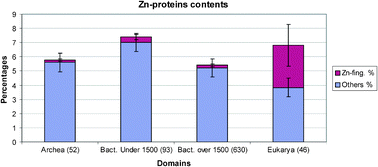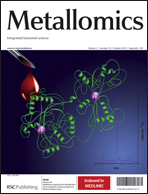Evolution has not been studied in detail with reference to the changing environment. This requires a study of the inorganic chemistry of organisms, especially metalloproteins. The evolution of organisms has been analysed many times previously using comparative studies, fossils, and molecular sequences of proteins, DNA and 16s rRNA (Zhang and Gladyshev, Chem. Rev., 2009, 109, 4828). These methods have led to the confirmation of Darwin's original proposal that evolution followed from natural selection in a changing environment often pictured as a tree. In all cases, the main tree in its upper later reaches has been well studied but its lower earlier parts are not so well defined. To approach this topic we have treated evolution as due to the intimate combination of the effect of chemical changes in the environment and in the organisms (Williams and da Silva, The Chemistry of Evolution, 2006, Elsevier). The best chemicals to examine are inorganic ions as they are common to both. As a more detailed example of the chemical study of organisms we report in this paper a bioinformatic approach to the characterization of the zinc proteomes. We deduce them from the 821 totally sequenced DNA of organisms available on NCBI, exploiting a published method developed by one of us (Andreini, Bertini and Rosato, Acc. Chem. Res., 2009, 42, 1471). Comparing the derived zinc-finger-containing proteins and zinc hydrolytic enzymes in organisms of different complexity there is a correlation in their changes during evolution related to environmental change.


 Please wait while we load your content...
Please wait while we load your content...